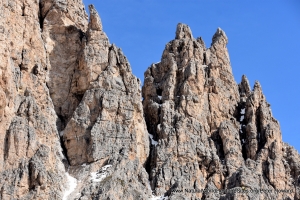EXPLORE the High Coast – Kvarken Archipelago with this slideshow, check the location map and get all the facts and information below.
For slideshow description see right or scroll down (mobile). Click to view slideshow
Location and Values: The High Coast in Sweden and the Kvarken Archipelago in Finland are located on opposite sides of the Gulf of Bothnia, a northerly extension of the Baltic Sea. This area is remarkable because of the rate at which the land is lifting and emerging from the sea as the weight of glacial ice that used to cover the area has been reduced through melting of the ice sheet in a warming climate over the past 10 – 24,000 years. The uplift is continuing to this day, and measurements indicate a rise of 285 m over 9,600 years, equivalent to an average 3 cm per annum. This is reckoned to be amongst the highest rates of uplift in the world. As a result of this uplift islands appear and unite, peninsulas expand, and lakes evolve from bays and develop into marshes and peat fens over relatively short periods of time.
Conservation Status and Prospects. According to IUCN’s Conservation Outlook Assessment (2017) the conservation status of the High Coast – Kvarken Archipelago is ‘good’. The IUCN report notes that the geological features of the site (which provide the basis for its world heritage status) are secure, but raises questions over threats facing the Baltic Sea as a whole, affecting biodiversity in the marine environment. The report notes that the marine environment is already showing signs of deterioration and there is a need for additional funding and better trans-boundary coordination to address these threats.
Links:
Google Earth
UNESCO Official Website
IUCN Conservation Outlook
UNEP-WCMC Site Description
Birdlife IBA
Slideshow description
The slideshow features a portfolio of photos from Finland’s Kvarken Archipelago taken by Sue Stolton and Nigel Dudley (Equilibrium Research) during a visit in June 2014. They illustrate the landscape features of the place, some of the local architecture, and a variety of typical vegetation and plants. Inevitably, with a site of this nature, it would be extremely difficult to illustrate the geological uplift phenomenon, but this short slideshow does at least provide some context for a greater understanding of the environment in which it is happening.
Factfile
Website Categories: Earth Features;
Area: 3,369 km2
Inscribed: 2000 (extended 2006)
Criteria:
- Geological features (viii);
The slideshow features a portfolio of photos from Finland’s Kvarken Archipelago taken by Sue Stolton and Nigel Dudley (Equilibrium Research) during a visit in June 2014. They illustrate the landscape features of the place, some of the local architecture, and a variety of typical vegetation and plants. Inevitably, with a site of this nature, it would be extremely difficult to illustrate the geological uplift phenomenon, but this short slideshow does at least provide some context for a greater understanding of the environment in which it is happening.
Factfile
Website Categories: Earth Features;
Area: 3,369 km2
Inscribed: 2000 (extended 2006)
Criteria:
- Geological features (viii);
The slideshow features a portfolio of photos from Finland’s Kvarken Archipelago taken by Sue Stolton and Nigel Dudley (Equilibrium Research) during a visit in June 2014. They illustrate the landscape features of the place, some of the local architecture, and a variety of typical vegetation and plants. Inevitably, with a site of this nature, it would be extremely difficult to illustrate the geological uplift phenomenon, but this short slideshow does at least provide some context for a greater understanding of the environment in which it is happening.
Factfile
Website Categories: Earth Features;
Area: 3,369 km2
Inscribed: 2000 (extended 2006)
Criteria:
- Geological features (viii);





